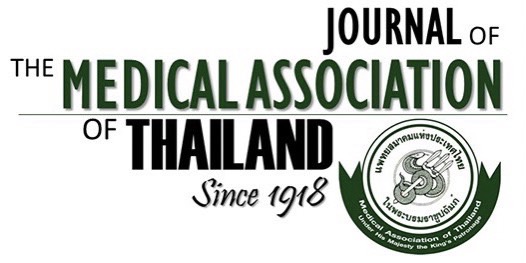Hallux Valgus Correction Using a Mini TightRope Device: A Report of the Short Term Outcomes in 3 Feet
Chayanin Angthong MD*, Supakit Kanitnate MD*, Wirana Angthong MD**
Affiliation : * Department of Orthopaedic Surgery, Faculty of Medicine, Thammasat Hospital, Thammasat University, Pathum Thani, Thailand ** Department of Radiology, Faculty of Medicine, HRH Princess Maha Chakri Sirindhorn Medical Center, Srinakharinwirot University, Nakhon Nayok, Thailand
Objective : Bony works seems to be base procedure for hallux valgus correction. Due to the challenge and possible complications
of these procedures, these issues generate ‘Foot and Ankle Society’ to consider alternative procedures. The ‘Mini TightRope’
(Arthrex, Inc., Naples, FL) or interrosseous suture/button device was introduced in 2007 to address the above mentioned
point. Although its feasibility and utilization were attractive, some reports revealed its drawbacks and limitations. The present
report is to demonstrate short-term outcomes and information that might be useful for avoidance of potential complications
from application of this device.
Material and Method: Three involved-feet in 2 patients with recalcitrant conditions and progressive hallux valgus, with at
least a 6-month course of conservative treatment, were included. Limitation criteria for using ‘Mini TightRope’ were; non-
athletic demand, good bone-stock, moderate severity of their hallux valgus (hallux-valgus-angle (HVA): 30-40, intermetatarsal-
angle (IMA): 14-20), no hypermobility of first tarsometatarsal joint, and no signs of degenerative joint disease of first
metatarsophalangeal/tarsometatarsal joint. Baseline data, American-Orthopaedic-Foot-and-Ankle-Society (AOFAS) scores,
Visual-Analogue-Scale Foot-and-Ankle (VAS-FA) scores (including radiographic parameters) were collected at pre- and
post-operative periods. The operations were carried out by a single surgeon. Precision in the creation of the interosseous-
tunnel between 1st -2nd metatarsals was critical for this device. All patients strictly followed a similar postoperative-protocol,
with austere prohibition of premature weight-bearing at forefoot-and-midfoot areas in 1-month postoperative-period.
Results : Although pre-postoperative (6-month) AOFAS/VAS-FA scores and radiographic angular differences were non-
significant as to p-value: 0.10, there were satisfactory improvements of all scores and angular values in all postoperative
periods. Patient number-two reported some tightness at 1st-2nd intermetatarsal area on left-foot. This was controlled with
oral-medications in 1-month postoperative-period. Besides, there were no significant complications in the present report.
Conclusion : ‘Mini TightRope’ might be of merit in hallux valgus correction for well-selected patients provided that technical
implementation is precise and postoperative-protocol is followed with proper discipline.
Keywords : Mini TightRope, Interosseous suture and button device, Hallux valgus, Forefoot surgery, Short term, Outcome



